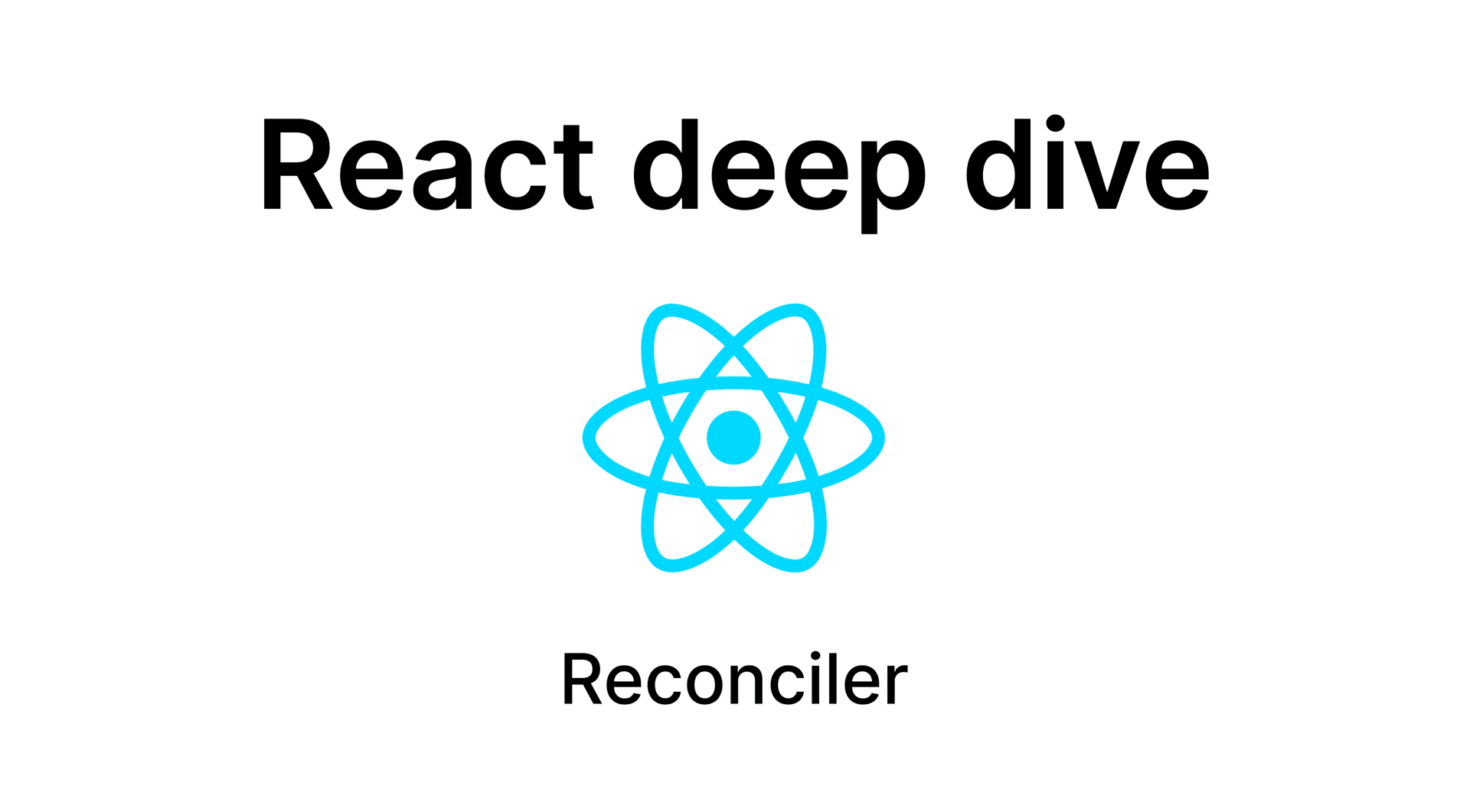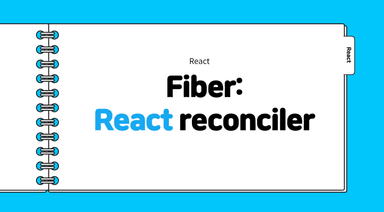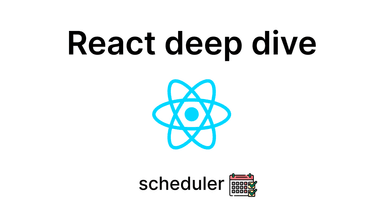
2024-08-19
React / Deep-dive (12)
Reconciler request schedule
이번 글에서도 분석의 바탕이 되는 코드는 React 16.12.0 version을 기준으로 하며, 해당 블로그에 감사 인사를전합니다.
이번 글에서는 발생한 Work(Update)를 Reconciler에서 Scheduler로 스케줄 요청하는 과정을 살펴보겠습니다.
아래 링크는 React의 렌더링 흐름에 따라 저 나름대로의 그림을 그려보았으며, 이 흐름에 따라 글이 이어 질 것입니다. (무단 복사 및 배포는 하지 말아주세요)
Flow
1. Reconciler
-
Dispatch a trigger to update.
-
The reconciler requests the scheduler to schedule a task.
2. Scheduler
- Schedule the work.
3. Scheduler Host Config
- Yield control to the host.
4. Reconciler Render Phase
-
Prepare for reconciliation.
-
Enter the render phase.
-
Perform rendering with hooks.
-
ReconcileChildren
-
Finishing Work
5. Reconciler Commit Phase
- Execute
useEffectanduseLayoutEffect.
6. Browser Paint
Reconciler → Scheduler
-
이전 글에서는 DispatchAction을 통해 Reconciliation의 trigger가 되어 다음과 같은 흐름을 살펴보았습니다.
- dispatchAction이 발생하면 해당 이벤트 발생 시점(expirationTime)을 기록하고 → scheduleWork()
- 해당 update event(Work)를 sync or async로 처리할 지 확인 후 → sheduleUpdateOnFiber()
- scheduler에게 전달하기 전 expirationTime을 통하여 우선순위 정리 → ensureRootIsScheduled()
- sync → scheduleSyncCallback() / async → scheduleCallback()
-
이번 글에서는 ensureRootIsScheduled()에 이어서 Reconciler에서 scheduler로 스케줄 요청을 하는 scheduleSyncCallback(), scheduleCallback() 함수부터 살펴보겠습니다.
(아직까지는 Reconciler이며, Scheduler로 들어가지 않았습니다.)
ensureRootIsScheduled()
-
이전 글에서 살펴보았던 ensureRootIsScheduled()에서 scheduleSyncCallback, scheduleCallback 함수를 다음과 같이 호출했습니다.
-
Sync의 경우 바로 callback함수(performSyncWorkOnRoot())를 스케줄러에게 넘기지만, Async의 경우 우선순위와 timeout시간과 함께 callback을 넘깁니다.
⇒ 스케줄러에서 해당 시간과 우선순위로 실행 시점을 조정한다는 것을 알 수 있습니다.
scheduleSyncCallback(performSyncWorkOnRoot.bind(null, root)); scheduleCallback( priorityLevel, performConcurrentWorkOnRoot.bind(null, root), // 만료 시간을 기반으로 작업 타임아웃을 계산합니다. {timeout: expirationTimeToMs(expirationTime) - now()}, ); }
scheduleCallback() / Async
- 우선순위, callback, options를 scheduler에 넘겨주며 스케줄링을 요청합니다.
- options
- timeout - 만료시간
- delay - 지연시간
- options
import * as Scheduler from 'scheduler' const { unstable_scheduleCallback: Scheduler_scheduleCallback } = Scheduler function scheduleCallback( reactPriorityLevel: ReactPriorityLevel, callback: SchedulerCallback, options: SchedulerCallbackOptions | void | null ) { const priorityLevel = reactPriorityToSchedulerPriority(reactPriorityLevel) return Scheduler_scheduleCallback(priorityLevel, callback, options) }
scheduleSyncCallback() / Sync
-
Sync는 동기적으로 실행되기 때문에scheduler에게 넘길 필요 없이 reconciler 내부적으로 처리합니다.
-
Sync work들은 내부 queue에 따로 저장해두고 적당한 시기에 queue를 비워줍니다. (flushSycnCallbackQueue())
-
만약 이전 시간에 살펴보았던 **scheduleUpdateOnFiber()**함수에서 executionContext ≠ NoContext라서 syncQueue를 비우지 않았다면 다음 틱에 동시에 발생한 업데이트는 배치 처리됩니다. 해당 업데이트는 Linked List로 이미 연결되어 있기 때문에 한번의 렌더링(Work)으로 처리됩니다.
⇒ Hook에서 자세히 살펴보겠지만 update는 circular-linked-list로 연결되어 있습니다.
function scheduleSyncCallback(callback: SchedulerCallback) { // Push this callback into an internal queue. We'll flush these either in // the next tick, or earlier if something calls `flushSyncCallbackQueue`. if (syncQueue === null) { syncQueue = [callback] // Flush the queue in the next tick, at the earliest. immediateQueueCallbackNode = Scheduler_scheduleCallback( Scheduler_ImmediatePriority, flushSyncCallbackQueueImpl ) } else { // Push onto existing queue. Don't need to schedule a callback because // we already scheduled one when we created the queue. syncQueue.push(callback) } return fakeCallbackNode }
flushSyncCallbackQueue()
- 만약 React가 유휴 상태여서 해당 함수를 호출했다면 기존에 스케줄링 요청한 callback은 취소하고 실행해야 한다.
export function flushSyncCallbackQueue() { if (immediateQueueCallbackNode !== null) { const node = immediateQueueCallbackNode; immediateQueueCallbackNode = null; Scheduler_cancelCallback(node); } flushSyncCallbackQueueImpl(); }
flushSyncCallbackQueueImpl()
flushSyncCallbackQueueImpl-code
function flushSyncCallbackQueueImpl() { if (!isFlushingSyncQueue && syncQueue !== null) { // Prevent re-entrancy. 중복 실행 방지 isFlushingSyncQueue = true; let i = 0; try { const isSync = true; const queue = syncQueue; // scheduler에게 callback함수의 우선순위와 실행을 요청하는 함수 runWithPriority(ImmediatePriority, () => { for (; i < queue.length; i++) { let callback = queue[i]; do { callback = callback(isSync); // performSyncWorkOnRoot() } while (callback !== null); } }); syncQueue = null; } catch (error) { // If something throws, leave the remaining callbacks on the queue. if (syncQueue !== null) { syncQueue = syncQueue.slice(i + 1); } // Resume flushing in the next tick Scheduler_scheduleCallback( Scheduler_ImmediatePriority, flushSyncCallbackQueue, ); throw error; } finally { isFlushingSyncQueue = false; } } }
Summary
- 이렇게하여 Reconciler가 Scheduler에게 scheduling을 요청하는 과정을 살펴보았습니다.
- Reconciler는 재조정 작업 / Scheduler는 Work의 실행시점을 scheduling 하도록 분리시켜 각자의 맡은 일만 하도록 구성되어 있는 것을 확인 할 수 있었습니다.
- 다음 글에서는 이제 work를 넘겨받은 scheduler가 스케줄링하는 방식을 살펴보겠습니다.

React / Deep-dive (11)
Reconcile trigger dispatchAction

React / Deep-dive (13)
Scheduler schedule task